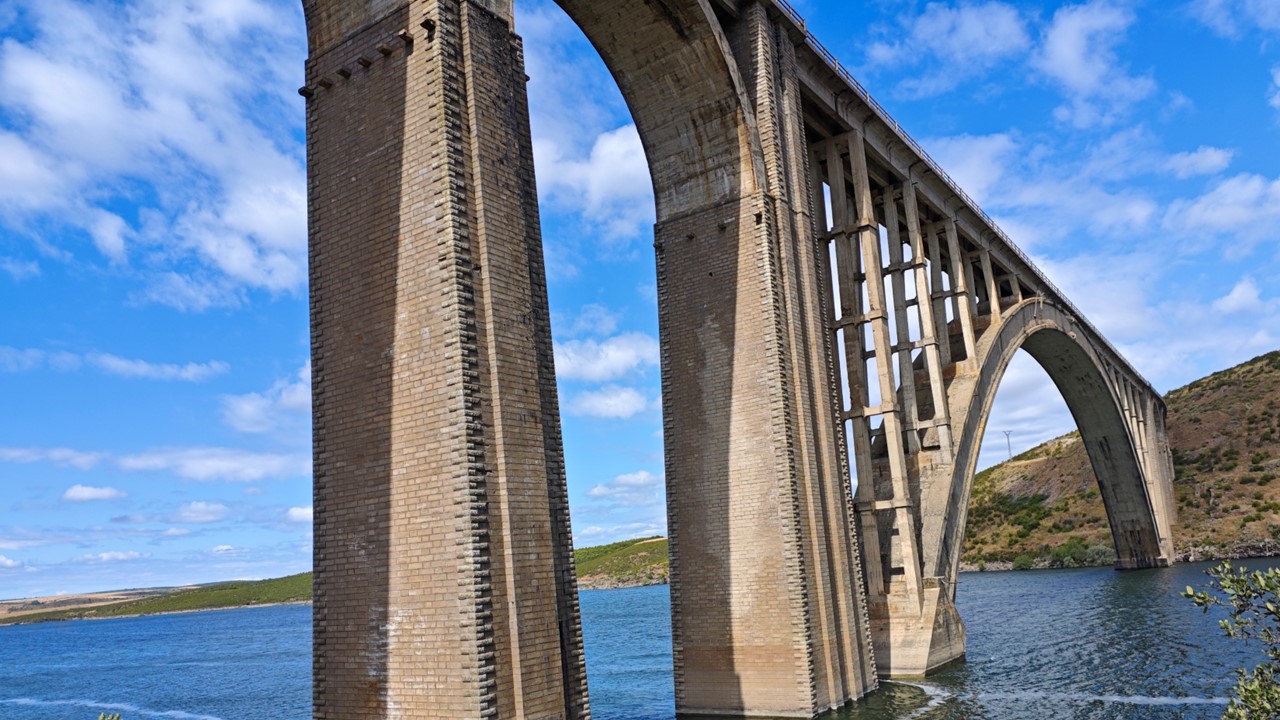The Martín Gil Viaduct was constructed between 1934 and 1942, during the modernization of Spain’s railway infrastructure. This bridge stands out for its curved design and thirteen spans, the most notable of which is a reinforced concrete main arch with a total span of 209.80 meters. At the time of its completion, it became the world’s largest reinforced concrete arch span.
The project was designed by engineer Francisco Martín Gil, whose name the viaduct bears, and executed under the supervision of the renowned engineer Eduardo Torroja Miret, known for his innovative use of reinforced concrete. The viaduct was built to span the Ricobayo reservoir as part of the Zamora-A Coruña railway line. Its construction posed a significant technical challenge, particularly due to the use of the autocimbra technique. This method involved using metal arches as support for the formwork during concrete pouring, which were subsequently embedded to function as additional reinforcement.
In addition to its technical significance, the viaduct is considered an iconic work of Spanish civil engineering, not only for its exceptional dimensions but also for the innovative solutions implemented despite the technological limitations of the time. For decades, this bridge has symbolized technical progress and the commitment to the development of the national railway infrastructure.
Today, this historically and functionally significant viaduct requires interventions to ensure its durability, safety, and structural functionality. The rehabilitation aims to preserve this emblematic piece of Spanish heritage while ensuring its operability within the modern railway transport network.
The primary objective is a comprehensive rehabilitation of the viaduct, which includes repairing existing damages, protecting against future deterioration, and enhancing its structural and functional safety. Additionally, measures will be implemented to minimize environmental impact and extend the structure’s lifespan.
Planned activities include vegetation removal and surface cleaning using water jets to adequately prepare the intervention areas. Deteriorated concrete sections will be repaired, and stone joints will be repointed to restore the structural integrity of the bridge. Corrosion-inhibiting treatments and waterproofing systems will also be applied to prevent future damage.
Key interventions also involve replacing railings, improving the drainage system to prevent water infiltration, and optimizing the railway alignment to redistribute loads and enhance structural stability. Complex technical solutions, such as suspended scaffolding, have been employed to facilitate access to challenging areas, such as the main arch and the piers over the reservoir.
The contracted works include technical assistance at various stages: project analysis, preparation of quality control plans and document management, environmental and safety monitoring during construction, and the drafting of “as-built” documentation upon project completion.
The construction works are expected to take approximately 16 months, with a total budget of €5,902,903.02, allocated as follows: civil works (87.7%), railway works (9.0%), waste management (1.1%), safety and health (1.9%), and environmental integration (0.2%).
This comprehensive effort will ensure the rehabilitation of a key infrastructure for railway transport while preserving a historical landmark of Spanish heritage, guaranteeing its functionality and safety for future generations.
